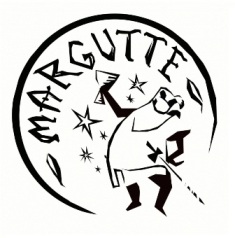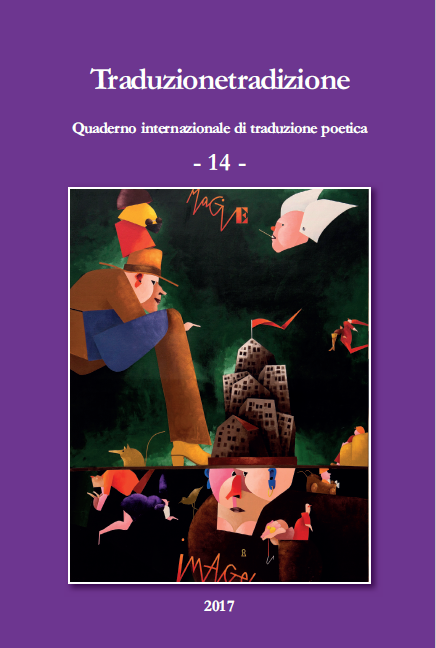SILVIA PIO (a cura)
An international magazine of poetic translation edited by Claudia Azzola, Traduzionetradizione is an interesting enterprise in the Italian translation panorama. Issue 13 was published last summer.The cover image is a painting by Claudio Zanini (Hunting Scene, part.). Among other articles, four Welsh contemporary poets are included: Gwyneth Lewis (translated into Italian by Carlo Gazzelli), Lyndon Davies, John Goodby (both translated by Claudia Azzola) e Graham Hartill (translated by Silvia Pio). Lyndon Davies has written the editorial that opens the issue:
«The four poets featured here go some way to exemplifying the broad spread of attitudes to poetic making in Wales, and ideas as to the function of poetry in general. On the Wales-based English-language poetry scene there has always been a majority caucus of poets writing in traditional forms in a language approximating to ordinary conversational speech, using anecdote, description and the metaphysics of common-sense. At the same time, more adventurous voices have rarely been entirely lacking, and alternative modes of saying have become both more numerous and more widely attended to in recent years, particularly amongst younger readers and writers.
Gwyneth Lewis writes in both Welsh and English. Her poems, formally very tightly controlled, in a way that sometimes brings to mind the structural rigor of traditional Welsh-language poetic forms, are richly metaphorical. Fiercely, even forensically intelligent in their examination of the particulars of human experience, they operate within classically grammatical and rational parameters. The rhetoric is logically constructed, and yet at the heart of it is an anxiety about language and the possibilities of communication, fear even about the destruction of communication via the death of a language, for instance, or death itself, or the debilitating effects of mental illness.
John Goodby also creates a poetry very tightly woven in terms of rhythm and sound, although his poetry is highly eclectic in its modes and influences. He owes a large debt to modernist experiments, both the modernism of the early twentieth century and its various avatars, including what’s sometimes referred to as the British Poetry Revival which came into flower in the 1970’s. James Joyce, Ted Berrigan, John Wieners and John James would certainly figure amongst his influences. His work can swing from dithyrambic, almost ecstatic extended verbal flourish, to clipped witty cultural observation, to dazzling processual machines utilising cut-up, superimposition and acrostics (or mesostics).
For Graham Hartill, ideas about open field composition have been important, as have Jerome Rothenberg’s adventures in ethnopoetics. His work explores the myths, legends and histories of many cultures and also reflects on the particular area of the Black Mountains in Wales where he lives. He has also been heavily engaged over the years in translating and writing through ancient Chinese poetic luminaries such as Tu Fu, Ruan Ji and others. For Hartill, the process of writing is often one of allowing our personal consciousness to sift through into very different, even distant areas of the human imagination, to take on the shape of those and to explore them against the shapes of his/her own present.
For me, Eliot was central (and probably still is), and, early on, formal masters such as Wallace Stevens, John Berryman and John Ashbery, though Rilke and certain French poets of the nineteenth and twentieth centuries were just as crucial. I consider myself a lyrical poet, though for me poetry is often a way of opening up and breaking out from received structures of language, thought and behaviour, by developing the figural dislocations and warpings intrinsic to them. For me, the idea of a self expressing itself, designating its reality in its own context, is an astonishingly strange and complex mystery in its own right and a rich source of subject matter.
Four very different poets, then, but sharing one characteristic, developed and given a different kind of space and positioning in each case: namely, a passionate engagement with the materiality of language and poetry, and, within that, an openness to the sometimes delightful and sometimes troubling complexities inherent in any act of saying.»
Hot off the press, issue 14 of Traduzionetradizione bear a picture by Emilio Tadini (Fairy Tale) on the cover. Issues13 (already presented in Wales last July) and14 will be launched in Milan, Italy, on 12 January at 5.30 p.m. in the Sala del Grechetto of Biblioteca Sormani, Via Francesco Sforza 7, and on 13 January at 6.30 p.m. in Spazio Tadini, Via Nicolò Jommelli 24.
An article about issue 11 of Traduzionetradizione can be found here.



